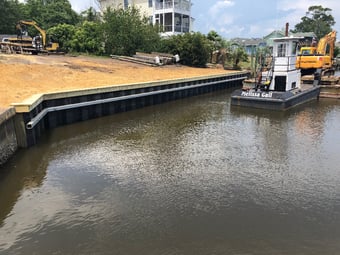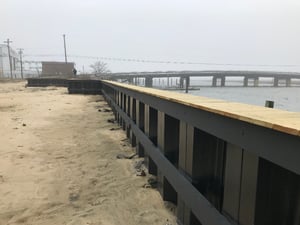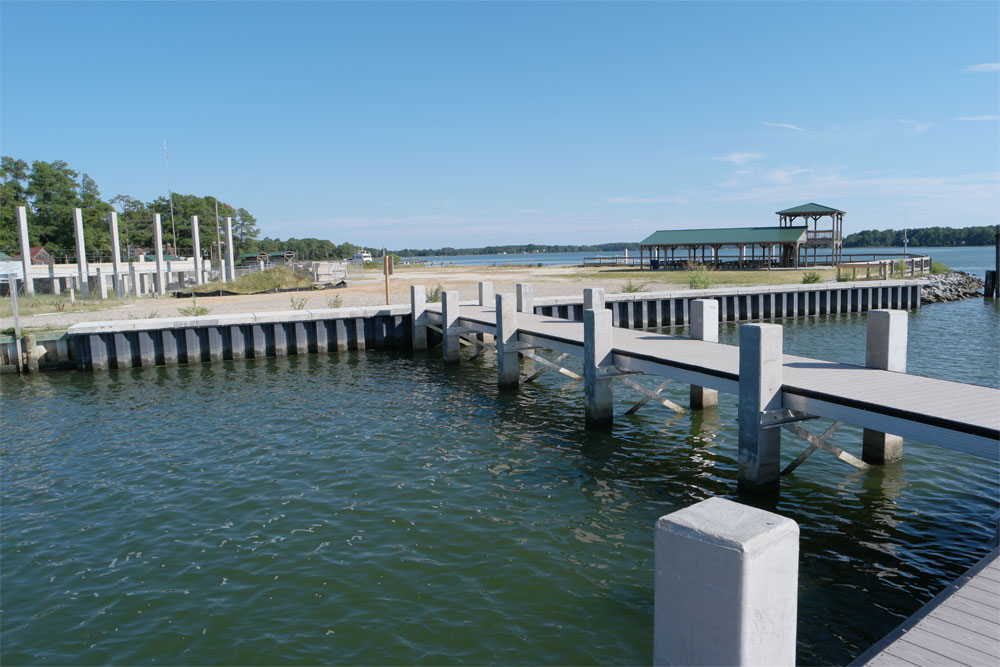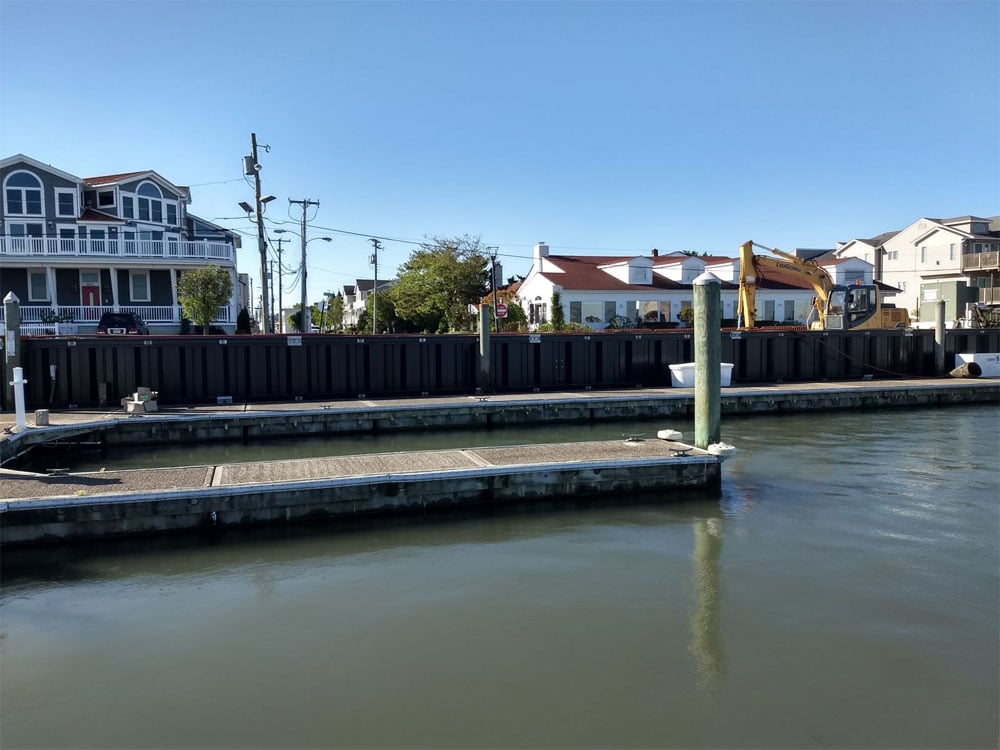Fiber Reinforced Polymer (FRP) materials provide the ideal technology for seawalls and retaining wall sheet piling system. The FRP sheet piles have 20 years of successful history as you can see on the SuperLoc® product page with data sheets and case studies.
We appreciate all the people who attended our recent webinar on Sheet Pile Wall Systems. If you would like a link to the webinar recording, send an email to Corey Sechler at csechler@pultrude.com.
Many people posed questions that we answered during the webinar. We want to share those answers with those who were not able to attend.
1. Like the LRFD capacity is based on Pultrusion LRFD, what are the ASD moment capacity calculations based on?Characteristic Design strengths per ASTM D7290 with the applied reduction strength and reduction factors for moisture uptake.
2. What are all the factors that need to be applied for ASD moment capacity to compare it against the demand loadOur allowable stress moment capacities have already been factored for Characteristic design strengths and strength and stiffness reduction for moisture uptake. You only need to apply the safety factor. Which typically ranges from 2 - 2.5.
3. What about creep stress?Creep is addressed via a Time effect factor in the properties.
4. What is the capacity of sheet pile in lateral direction? The concern with twisting of sheeting when driving.Sheets can twist during installation. Typically, contractors build templates to properly hold the sheet during installation and avoid twisting / mitigate. Contact me at csechler@pultrude.com for videos

Based on the stress-strain curve, composite materials do not exhibit a yield, they would be considered as a brittle material. However, because of their low modulus, members in bending will deflect significantly prior to failure, so visually speaking you CAN identify a problem prior to failure.
6. I saw this FRP have been used as wing walls in bridge approach slab; How compaction with rollers affect the stability of wall after the fact?That wall was installed over 10 years ago. No noticeable issues have been seen after installation
7. Can be sheet piles be used as sidewalls when building dikes? How about seepage through the material from groundwater in the embankment of the dike?
Sheet pile can be utilized as sidewalls for dikes, in regard to seepage through the walls, there are many interlock sealants that can be utilized (i.e. Wadit, or Alchemy Spetec….)
8. After locking together, do the sheets act homogenous bulk structure?We analyze as a single sheet/beam.
9. Can you please send us the presentation! I need more time to study properties for design purposes.We will add a link to our website and a link to the webinar is below. You can email me at csechler@pultrude.com

Yes, the sheet can be used as long as you use the calculations to adequately deal with the moments. Typically, FRP is not used for temporary shoring installations.
11. Can you comment on penetration issues with cohesive soils?
Send us additional information at csechler@pultrude.com
Bolted connections are used.
13. What are limitations when driving piles in gravel area?When the blow count of the soil is greater than 20, then we suggest a soil review. General if the N>20, then we may recommend pretrenching the area, or utilizing a mandrel system.
14. Do you have any experience with the project to build a 100% watertight cut-off wall in ecologically threatened area, e.g. landfills with dangerous chemicals?There are many interlock sealants that can be utilized (i.e. Wadit, orAlchemy Spetec….)

Typically, 60' for sheet pile, but we can produce length up to 100' or longer.
16. Thanks! Can we install a sheet pile that is 18' exposed, 34' embedded? Also, can these piles be submersed in ocean water?
Yes, we generally see a rule of thumb is 1/2 in, 1/2 out, but depending upon soil conditions you may need 2/3 in and 1/2 out.
The FRP piling material is not degraded by ocean water.
Contact me at csechler@pultrude.com
18. How does water absorption affect properties?Water absorption decreases the long-term strength and stiffness and we apply the appropriate reduction factors. This is a small reduction in properties. See literature.
19. Is that guide specification on your site?Yes, it is available on the SuperLoc webpage.

20. How does FRP Sheet Pile stack up in "LEED" Design standards for points to help in achieving a standard?
It does not contribute to the LEED scoring. FRP is still a sustainable material as it requires less energy to manufacture and it lasts twice as long as steel, concrete, and wood.
21. Can you discuss how the piles and sheeting are tested for UV Radiation degradation?
Send me an email reminder and I will email the white paper to you.
22. Do the amount of light absorbers and UV inhibitors vary from batch to batch or is it consistent with every pile/sheeting manufacturing?It is within our QC standards and mix standards +/-.
23. How are the sheet locked together? And the failure mode?Standard interlock just like steel sheet pile. The failure mode is local compression buckling of the flange is typically how a composite sheet pile fails. They act more as independent beams versus a diaphragm action. There is minimal transverse stress.
24. You said 3 layers of UV protection but only mentioned 2, UV inhibitors and synthetic veils, what is the third component?Chemistry light absorbers, inhibitors, and veils.
